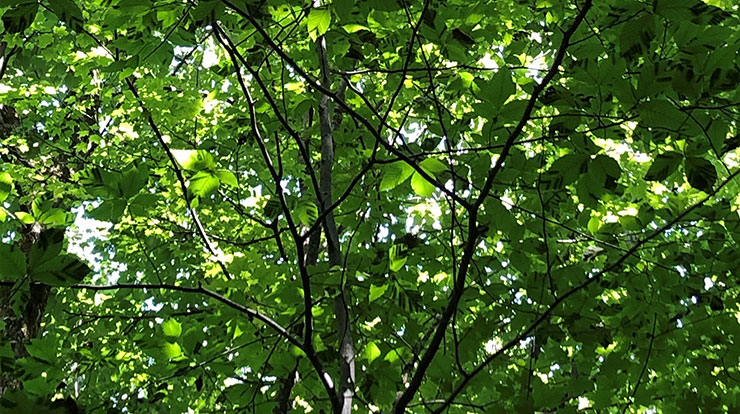New Tool Offers Early-warning System for Beleaguered Beech and Other Trees Threatened by Invasive Diseases

Nonnative, invasive tree pathogens and insect pests continue to threaten forest sustainability across the world. A recent example is beech leaf disease, which severely affects American beech and is spreading rapidly across the eastern United States. In a study led by Ohio State University, scientists at the Northern Research Station have helped develop a tool to detect beech leaf disease even before symptoms appear.
Beech leaf disease was first detected in northeastern Ohio a decade ago and has since spread to 13 states throughout the Northeast and mid-Atlantic regions of the United States as well as into Ontario, Canada. A nonnative, invasive nematode has been found to be associated with American beech in this region, and particularly with beech leaf disease-symptomatic trees. Methods for early detection that identify nematode-infected trees before symptoms develop are needed for early and rapid response. In a project led by Ohio State University, scientists from the Northern Research Station, Connecticut Agricultural Experiment Station, and University of Georgia evaluated whether near-infrared spectroscopy combined with machine learning (a type of artificial intelligence) can identify infected but asymptomatic beech leaves. Spectral profiles of asymptomatic beech leaves from nematode-infected and nematode-free trees were collected directly in the field using a portable, handheld infrared sensor. Asymptomatic leaves from nematode-infected trees were successfully distinguished from nematode-free, healthy-looking leaves using machine learning. This work demonstrates that the tool has potential to be used as a point-of-care early warning system for this and potentially other important tree diseases.
Contacts
- Anna Conrad, Research Plant Pathologist
Publications and Resources
External Partners
- Carrie Fearer, The Ohio State University, Department of Plant Pathology
- Robert Marra, The Connecticut Agricultural Experiment Station, Department of Plant Pathology and Ecology
- Caroline Georskey, The Ohio State University, Arabidopsis Biological Resource Center
- Caterina Villari, University of Georgia, D.B. Warnell School of Forestry & Natural Resources
- Jason Slot, The Ohio State University, Department of Plant Pathology
- Pierluigi Bonello, The Ohio State University, Department of Plant Pathology

